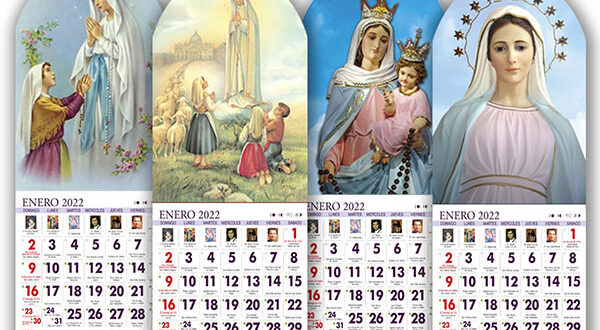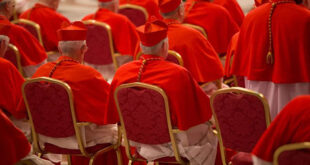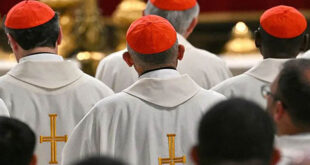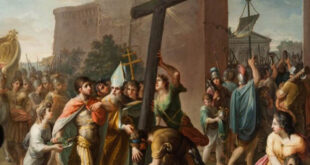The Liturgical Year is one of the great treasures of the Catholic Church. Through its rhythms and seasons, the Church invites us to delve deeply into the mysteries of faith, to walk with Christ, and to undergo a true conversion of heart. More than just a chronological structure, the Liturgical Year is a spiritual journey that offers Catholics a clear path to grow in their relationship with God. It’s an opportunity to connect our daily lives with the great drama of salvation, which unfolds over time.
In this article, we will explore in detail the different liturgical seasons, their meanings, and how each provides a unique opportunity to deepen our faith and transform our lives. Join us on this journey through the spiritual seasons of the Liturgical Year.
What is the Liturgical Year?
The Liturgical Year is the annual cycle of celebrations that the Church organizes to commemorate the great mysteries of the life of Jesus Christ, from His incarnation to His ascension, including the life of the Virgin Mary and the saints. This sacred calendar doesn’t strictly follow the civil calendar but is centered around the foundational events of the Christian faith.
The goal of the Liturgical Year is that, through prayer, the celebration of the sacraments, and the hearing of the Word, the faithful may spiritually walk with Christ throughout the year. It is a way in which the Church helps us stay focused on what truly matters: our relationship with God and our commitment to faith.
The Liturgical Seasons: Key Moments of Our Spiritual Journey
The Liturgical Year is divided into different seasons, each with its own liturgical color, symbols, prayers, and biblical readings. Each season has its own unique spiritual richness and offers a special invitation for the faithful to renew their life in Christ.
1. Advent: A Time of Hope and Preparation
The Liturgical Year begins with Advent, a period of four weeks that prepares us for the coming of Christ. It is a time of hope and expectation, during which we remember Jesus’ first coming in the humility of Bethlehem and also prepare for His second glorious coming at the end of time.
The liturgical color for Advent is purple, symbolizing penitence and conversion. Although it is a time of preparation, Advent is not as austere as Lent. It invites us to look forward with joy, knowing that the Savior is near. The readings at Mass during this time call us to watchfulness, conversion, and joy, reminding us that we must always be prepared to receive Christ in our lives.
Advent provides a unique opportunity to reflect on how we are preparing our hearts to welcome Jesus. Are we ready to make room for Him in our lives, or are we too caught up in worldly concerns? This season invites us to create that inner space, to purify our intentions, and to wait with hearts full of hope.
2. Christmas: Celebrating the Birth of the Savior
After Advent comes the joy of Christmas, the season when we celebrate the birth of Jesus Christ, the Word made flesh. Christmas is not just one day but a season that lasts until the Feast of the Baptism of the Lord. The liturgical color is white, symbolizing purity, light, and glory.
During Christmas, the Church invites us to contemplate the mystery of the incarnation: God became man, shared our human nature, and brought us salvation. The readings and prayers during this time encourage us to meditate on Christ’s humility, who chose to be born in the poverty and simplicity of a manger. It reminds us of God’s immense love, who did not hesitate to send His Son to save us.
It is a time of deep joy, but also of reflection on how we are responding to this immense gift. Are we welcoming Christ into our lives with the same enthusiasm and joy as the shepherds and the wise men, or have we allowed routine and distractions to dampen our fervor?
3. Lent: A Journey of Conversion and Renunciation
Lent is a forty-day period that prepares us for Easter, the heart of the Liturgical Year. It begins on Ash Wednesday and invites us to a time of penance, prayer, and fasting. The liturgical color is purple, symbolizing repentance and spiritual preparation.
This season is inspired by the forty days that Jesus spent in the desert before beginning His public ministry. It calls us to imitate Christ in His struggle against temptation and to renew ourselves spiritually through renunciation and sacrifice. During Lent, the Church encourages us to examine our lives, confess our sins, and turn back to God.
The central call of Lent is conversion. It is a time to review our priorities, strip away what draws us away from God, and strengthen our spiritual life through practices such as fasting, almsgiving, and intense prayer. It is also a time for solidarity with those who suffer, to remember the needy, and commit ourselves to justice and charity.
4. Easter: The Victory of the Risen Christ
After the Lenten preparation comes the glorious celebration of Easter, which commemorates the resurrection of Jesus Christ. Easter is the center of the Liturgical Year, the event that gives meaning to our entire faith. The liturgical color is white, symbolizing glory and triumph.
The Easter Vigil is the most solemn moment of the liturgical calendar, where we joyfully proclaim that Christ has conquered death and given us eternal life. Easter is not just one day but a fifty-day season, culminating in the feast of Pentecost, when we celebrate the gift of the Holy Spirit.
The Easter season invites us to live in the joy of the resurrection. Christ has triumphed, and we, as His followers, are called to share in that victory. It invites us to live with unshakable hope and to be witnesses of the transformative power of the resurrection in our daily lives.
5. Ordinary Time: Living the Faith in Everyday Life
Ordinary Time occupies the majority of the liturgical calendar and is the time when we are not celebrating a specific mystery, such as Christmas or Easter. However, Ordinary Time is no less important. It is the time when we are called to live our faith in the everyday, to apply what we have learned and experienced in the more solemn seasons.
The liturgical color is green, symbolizing hope and life. During this time, the readings at Mass invite us to reflect on the life and teachings of Jesus during His public ministry, and to consider how we can be His disciples in our daily lives.
Ordinary Time reminds us that holiness is not lived only in extraordinary moments, but in the small decisions and actions of each day. It is a time to grow in virtue, to follow Christ’s example in our dealings with others, and to keep our faith alive throughout the year.
Conclusion: A Continuous Journey of Faith
The Liturgical Year is much more than a structure of dates and celebrations. It is a spiritual journey, an opportunity to grow in our faith, to draw closer to Christ, and to transform our lives in the light of the Gospel. Each liturgical season offers a special grace and a unique invitation: whether it is the hope of Advent, the joy of Christmas, the penance of Lent, the victory of Easter, or the everyday life of Ordinary Time.
To fully embrace the Liturgical Year means to live each day closer to Christ, to be guided by the Word of God, and to allow the Holy Spirit to transform our hearts. As Catholics, we are called to participate fully in the liturgy, to live each season with intensity, and to allow the rhythm of the Liturgical Year to shape our spiritual life. Ultimately, this journey is not only toward a temporal destination but toward eternal life in Christ.






